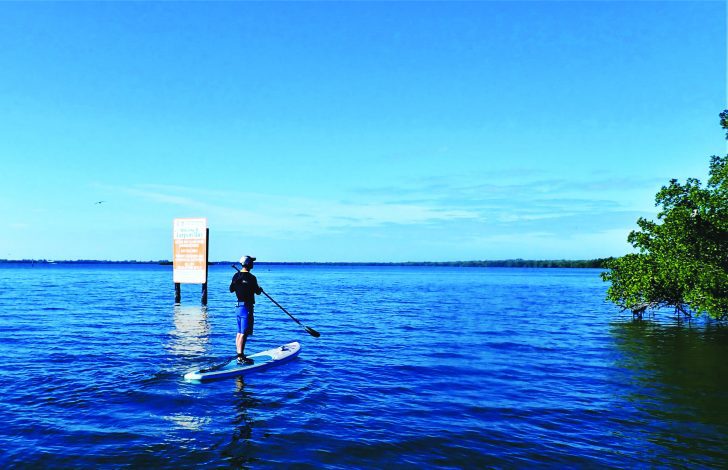Mike Hammond
With traffic starting to lighten in the next few weeks, our beloved barrier islands become more accessible again. This will be a great opportunity to revisit the J.N. Ding Darling National Wildlife Refuge on Sanibel Island. For families looking for a relaxed wildlife filled paddle, this is at the top of my list. Tarpon Bay Explorers maintain the concession at the refuge’s Tarpon Bay launch and make it very easy for visitors to have a hassle-free paddle. They provide all the equipment you need and help you into the water or they offer a variety of tours and guided trips if preferred. Fishing bait and tackle can be purchased or rented here. I like doing the touch-tank tour with the kids before heading out.
Most paddlers make a left at the launch and head for the Commodore Creek Mangrove Trail. It is a well-maintained trail teaming with mangrove crabs, fish, birds and other wildlife. The slower you go, the more you see in the tunnels, so don’t forget to look up every once in a while. After paddling the tunnel, we usually explore the bay and find rays, dolphins, small sharks, and manatees. Manatees frequent this area so often that if I don’t see one near the launch, I’m disappointed. During my last paddle here in February, I lost count of all the large redfish and snook I spooked with my SUP.

After returning to the launch, there are great facilities and a gift shop just steps away. Construction of a marine lab had forced the closure of the public launching of paddlecraft from this site. Thankfully the project is complete and the launch is open again for public use. Just remember to pay your $7 launch fee. However, if you have your own equipment, I highly recommend launching from the refuge’s well-known Wildlife Drive (closed Fridays). Pay the $5 and drive out to one of the launches along the road. Once on the water, I usually don’t know where to look because of all the wildlife around. Wading birds on the flats, ospreys hauling fish above, stingrays and horseshoes crabs below. It can be overwhelming at times. Having access to fish in the no-motor zone lends itself to some fantastic opportunities. Another quick warning: pay attention to the tides. I failed to do this on one occasion and had to drag my kayak through 80 yards of mud as a consequence. Tides are posted at the entrance for the birders.
The free museum at Ding is one of my favorites and a must before or after you go out. It is very interactive for the kids and helps them make connections with the wildlife and ecosystems they just observed. Bailey’s Shell Museum, Sanibel-Captiva Wildlife Foundation’s Museum, and the C.R.O.W. Education Center are all a short bike ride away and also well worth the visit.

